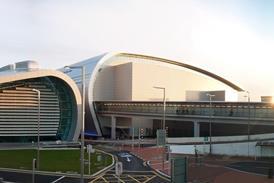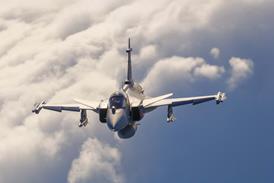A GPS advisory board has revealed that broadband provider LightSquared's revised operating band for 4G wireless service caused "harmful interference" to most of the 92 general purpose GPS devices, including handheld GPS units, tested by the US Air Force in November.
The National Executive Committee for Space-Based Positioning, Navigation, and Timing (PNT), chaired by US Transportation and US Defence department officials, also revealed in its 14 December statement preliminary information about a closely held US Federal Aviation Administration (FAA) and LightSquared analysis of certified aviation GPS units underway since June.
"Separate analysis by the [FAA] also found interference with a flight safety system designed to warn pilots of approaching terrain," the advisory stated.
Terrain awareness and warning systems (TAWS) generally use a combination of GPS and inertial navigation system data to compute an aircraft's position with respect to upcoming terrain and obstacles in order to provide timely aural and visual warnings of impending collisions.
LightSquared acknowledged it must work with the FAA to resolve "one remaining issue regarding terrain avoidance systems", but said it "profoundly" disagrees with the PNT's conclusion on general navigation devices. Chief executive Sanjiv Ahuja has said the air force testing, based on data that LightSquared had seen, used transmitter power levels that were too high. Ahuja said he was pleased by the PNT's finding of "no significant interference" with cellular phones during the air force testing.
The US Federal Communications Commission (FCC) in January gave LightSquared a conditional approval to launch the new broadband service, pending confirmation that the L-band system would be compatible with GPS.
LightSquared on 12 December, two days before the PNT advisory was issued, petitioned the US Federal Communications Commission (FFC) to, in effect, set aside its allotted upper 10MHz operating spectrum, a band that had proven devastating to aviation GPS receivers in testing earlier this year. As a result of that testing, LightSquared had agreed not to use the upper band, at least initially, changing its plan to operate on only a lower 10MHz band, a slot thought to be more compatible with GPS, pending analysis and testing. Industry remained skeptical that the company would one day want to use the upper band again, however.
In return for the concession, LightSquared had asked the FCC to remove any caveats that would keep it from launching service on the lower 10MHz band, the spectrum now being analysed. The 14 December PNT advisory, confirming issues with the lower band, would appear to leave little hope for such a quid pro quo.
Lower band testing will continue in early 2012, when the air force will begin investigating precision GPS units, those used for precision surveying, agriculture and for certain timing systems for the FAA, among many other applications. Several companies are designing and building filters that could mitigate the interference for precision units, a solution that will not likely be an option for general purpose GPS devices and certified aviation units, including TAWS equipment.
The PNT's final report on the air force testing as well the FAA analysis should be out by the end of January, says the DOT.
LightSquared expects the FCC to make its final decision on whether the company can roll out the broadband network on the lower 10MHz band by the end of the first quarter in 2012.
Source: Air Transport Intelligence news




















